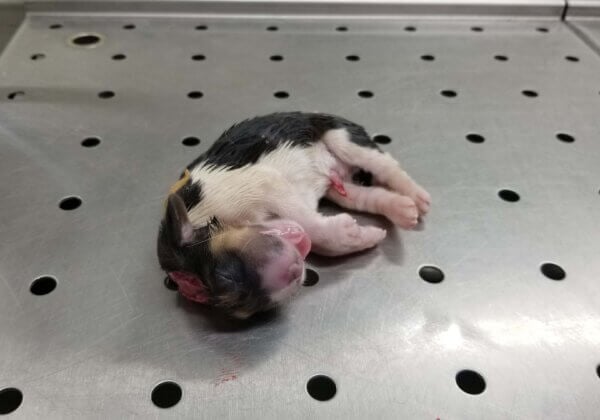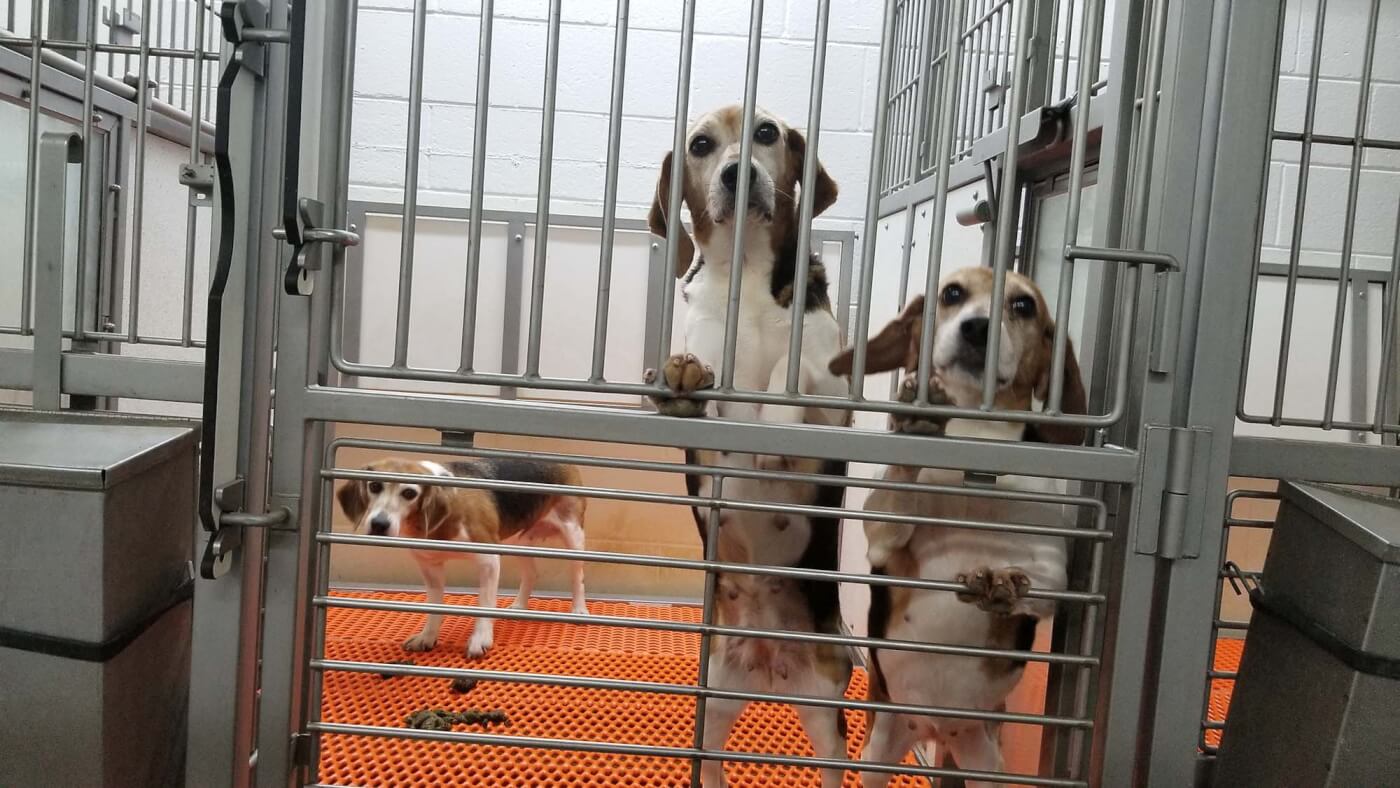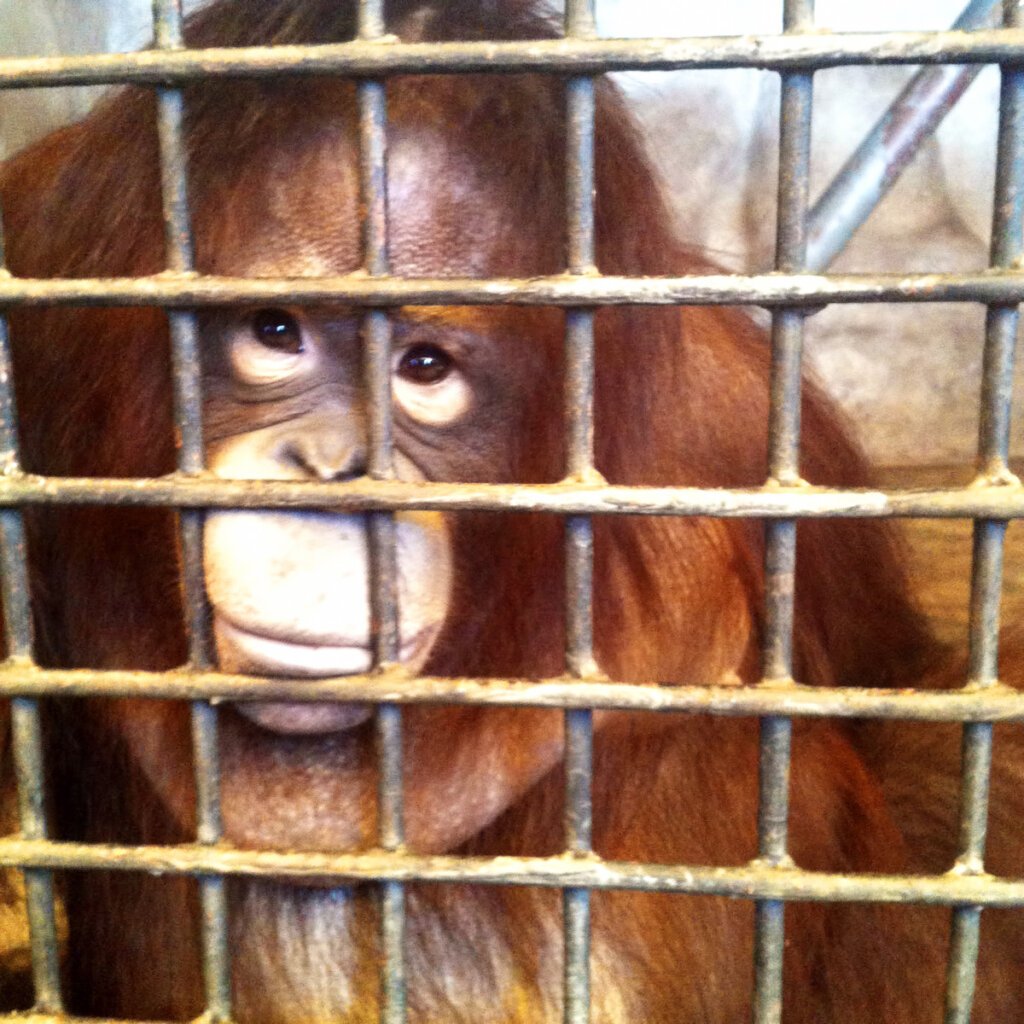
Beagles ‘Factory-Farmed’ and Sold for Experimentation
A 2021 PETA US undercover investigation found 5,000 beagle dogs and puppies intensively confined to small, barren kennels and cages 24/7 at a massive breeding mill in Cumberland, Virginia. During the course of the investigation, the mill was owned and operated by Envigo.
Based on the evidence, a team of US Department of Agriculture officials conducted a multi-day inspection of the mill.
The dogs had no beds, no toys, no stimulation – no real lives. For more than 50 years, various companies have bred them at this dog factory farm to sell to laboratories for experimentation.
Deprived of any opportunity to run, play, and simply act like dogs, the beagles just pace back and forth and jump up and down.
The dogs were kept in sheds that stretched as long as a large football pitch and were deafeningly loud when hundreds of them barked at once. The noise level reached over 117 decibels – louder than a rock gig – and of course, the dogs have no way to escape from the virtually constant noise. Dogs’ hearing is much more sensitive than humans’ – they hear sounds that we cannot and from much farther away.
The crowded and stressful conditions cause the animals to fight, often resulting in injuries, especially to their ears.
Female dogs are bred repeatedly for years. Many gave birth to puppies on the hard floor.
A supervisor found one pregnant dog with a fever. The next day, a worker found her “dead – like stiff as a board”, with “two puppies in her and … they had torn through her uterus [and] were just kind of floating around in her abdomen. So all like … the afterbirth … was all … in her stomach. And I think that just led to a massive infection.”

Dead and Dying Puppies: an Almost Daily Occurrence
Over the course of the investigation, the eyewitness found more than 350 puppies dead among their live littermates and mothers. Some puppies had been inadvertently crushed to death by their mothers inside the cramped cages, while others suffered from hydrocephalus (in which fluid builds up inside the skull and puts pressure on the brain), were eviscerated, or just couldn’t survive the harsh conditions.
One Monday, the investigator found a puppy whose body was split open, was rotting, and smelled rancid in a cage with the puppy’s mother and littermates. A worker said, “That puppy’s probably been in there since Friday.”
Some puppies fell through holes in the cages and ended up in drains, soaking wet and covered with faeces, bedding, and waste. Typically, they did not survive.
The investigator brought one such puppy to a supervisor and the site manager, who responded, “Shit.” As staff discussed putting the puppy in with a nearby nursing dog, the site manager said of dogs in the room, “Honest to God, those fuckers are so close[ly] related … we’re probably not that far off.” The next morning, the investigator found the puppy dead.


Conscious Puppies Killed by Intracardiac Injection – Excruciating and Unacceptable
Workers put some puppies down by trying to inject euthanasia solution into their hearts while they were conscious and able to feel the needle penetrating their chest, contrary to veterinary guidelines for euthanasia.
After a worker denied that he needed to sedate one conscious puppy before putting her down, the puppy raised her head. When the investigator pointed out that “she’s still … awake”, the worker did not respond. He just put the needle into the animal’s chest and injected the solution.
A supervisor was aware of this practice and knew that at least one worker engaged in it. Some workers did little – or nothing at all – to verify that animals were dead before putting them into plastic bags.

Soaking Animals and Food With High-Pressure Water
Nursing mothers and their puppies were left in their cages while a supervisor and others sprayed the cages with a high-pressure hose. The dogs were left soaking wet.
Careless spraying also left food mouldy and rotting, and maggots sometimes infested puppies’ food.
In addition, the facility caged cats in desolate rooms, where they were desperate for attention.
Lay Workers With No Veterinary Credentials ‘Diagnosing’ and Cutting Open Dogs
When dogs were sick or injured, lay workers tried to diagnose and treat them.
A supervisor inserted a needle into a puppy’s head, without anaesthetics or analgesics, in a crude attempt to drain fluid from a wound. The puppy cried out loudly – so the supervisor tried to hold his mouth shut.
Workers who were not veterinarians – or even veterinary technicians – cut prolapsed tissue off puppies’ eyes, stitched dogs’ prolapsed penises, and even cut puppies out of sedated dogs’ abdomens before putting the mothers down.
They were expected to perform “necropsies” by cutting open puppies’ remains in an attempt to determine their cause of death.


Standard Operating Procedures and the Suffering They Caused
Workers were instructed to use clamps to remove newborn puppies’ dewclaws – where bone meets nail – without any pain relief.
Workers were also charged with pressing needled clamps into puppies’ ears– as their mothers looked on – and then rubbing paint into the resulting holes to tattoo them. Dozens of puppies were tattooed three times – first with the wrong information, the second time with “X”s over the mistakes, and then again with the intended tattoo.

Refusing to Follow Federal Inspectors’ Instructions and Conspiring to Conceal It
For nursing mothers’ final 48 hours with their puppies, workers intentionally deprived the mothers of food. According to a supervisor, inspectors from the US Department of Agriculture told management in July to feed the dogs through their last nursing day, but the supervisor refused and continued to deny the mother dogs even half a cup of dry dog food.
After telling the investigator and another worker that nursing dogs “did not get fed”, the supervisor cautioned, “[I]f too many people know it, it’s gonna get out that’s what we’re doing, and then it’s gonna get bad.” Later, the supervisor encouraged workers to say that they were feeding nursing mothers – if they were asked about it – even though they had been instructed not to.

You Can Help Dogs and Other Animals
Experiments on these beagles and other animals are cruel and unethical, and did you know that a staggering 90% of basic research, most of which involves animals, fails to lead to treatments for humans?
In Australia, we’re mostly denied the right to know what’s being done to animals in laboratories, even though our taxpayer money is paying for the experiments. The Australian code of practice for the care and use of animals for scientific purposes is a self-regulating system that offers very little protection for animals in laboratories.
Humane Research Australia estimates that more than 7,200 dogs were used for research and teaching purposes in Australia in just one year, and published research papers indicate that frequently, greyhounds and beagles are used.
We need a better way – and PETA entities’ scientists have come up with it. The Research Modernisation Deal outlines a roadmap and strategy for replacing the use of animals in experiments with human-relevant methods. With greater investment in animal-free methods, scientists in Australia would be able to develop better treatments for human diseases as well as more reliable methods for toxicity assessment.
Please sign our petition urging the Australian government and national research councils to implement a policy that mandates an end to animal experimentation and provides a clear strategy and timeline for achieving this goal.
Help Animals in 2025: Renew Your PETA Membership!





